Unlocking Health Equity: Why Health Literacy Matters in Digital Content Creation
As a health tech company whose products are consumed by a diverse and global audience, Dario holds ourselves to a high standard when it comes to creating engaging experiences that can demonstrate positive clinical outcomes. Our goals to address health equity can’t be achieved without also tackling health literacy, or the ability for people to find, understand, and use information and services that inform their health decisions and actions.
According to the US Department of Health and Human Services, nearly 9 out of 10 adults in the U.S. have difficulty using the everyday health information that’s routinely available in our health care facilities, media, and communities. Additionally, nearly 36 percent of adults in the U.S. have low health literacy, with disproportionate rates found among lower income Americans eligible for Medicaid.
At Dario, we strive to be a leader when it comes to improving health literacy. Our digital solutions are designed to be engaging and offer information and tools that aim to support people in making informed health decisions. Now, we’re leveraging the lessons learned while developing content for Twill (acquired by Dario earlier this year) and applying these insights across all of our content and channels at Dario.
In honor of Health Literacy Month, I’m sharing the six principles my team follows to develop content that stands a far better chance of improving health literacy and equity.
Health Literacy Tenet #1: Make It Digestible
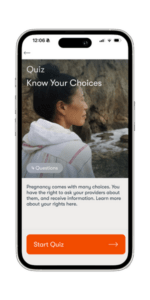
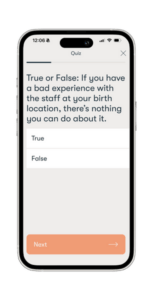 When we created a program on the Twill Therapeutics app to help Elevance Medicaid members across the perinatal journey, one of the key topics was taking charge of one’s own healthcare during pregnancy. We focused on short, bite-sized activities to help people feel a sense of achievement more frequently.
When we created a program on the Twill Therapeutics app to help Elevance Medicaid members across the perinatal journey, one of the key topics was taking charge of one’s own healthcare during pregnancy. We focused on short, bite-sized activities to help people feel a sense of achievement more frequently.
Editors and writers also applied best practices from plain language, which made a meaningful difference in the readability of the activities. And we always kept the goal front-and center, whether it was advocating for one’s needs at an appointment or recognizing red-flag symptoms that might warrant a call to the doctor.
Health Literacy Tenet #2: Remember That Many People Are Visual Learners
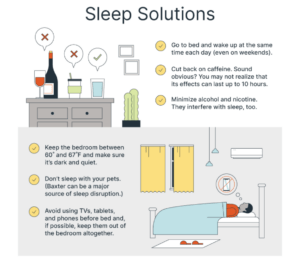 Breathing new life into dry statistics and curating studies from research papers into intriguing visuals, gave us a winning format that we continue to use to this day to deliver psychoeducation across a variety of topics, from sleep to anxiety. In my early days creating digital health content, the power of visual became undeniably important after we shared an infographic on the “Science Behind a Happy Relationship” – and we saw the graphic become viral, garnering over 2 million views in a matter of days before being reposted on Reddit and a number of news sites. When trying to engage people, lean into the mediums that matter.
Breathing new life into dry statistics and curating studies from research papers into intriguing visuals, gave us a winning format that we continue to use to this day to deliver psychoeducation across a variety of topics, from sleep to anxiety. In my early days creating digital health content, the power of visual became undeniably important after we shared an infographic on the “Science Behind a Happy Relationship” – and we saw the graphic become viral, garnering over 2 million views in a matter of days before being reposted on Reddit and a number of news sites. When trying to engage people, lean into the mediums that matter.
Health Literacy Tenet #3: When in Doubt, Define
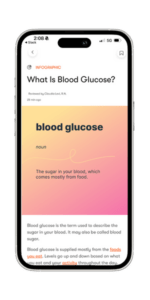 When attending doctor’s appointments, people are faced with a slew of medical terms said quickly, and often without thorough explanation. The problem is, many people are simply nodding along. In 2022, a survey of 2,000 Americans conducted by PatientPoint found that approximately half of respondents with a health care provider reported being scared to ask their doctor questions about their conditions or symptoms. Furthermore, 7 in 10 were concerned they wouldn’t be able to understand the terminology used by their doctors in response to their questions.
When attending doctor’s appointments, people are faced with a slew of medical terms said quickly, and often without thorough explanation. The problem is, many people are simply nodding along. In 2022, a survey of 2,000 Americans conducted by PatientPoint found that approximately half of respondents with a health care provider reported being scared to ask their doctor questions about their conditions or symptoms. Furthermore, 7 in 10 were concerned they wouldn’t be able to understand the terminology used by their doctors in response to their questions.
This is where the intimacy of a digital platform can foster access to desired information in a relatable way. On Twill Care, we’ve created a set of informational cards that aim to explain common medical terms and acronyms. These cards are designed to support patients’ understanding of their health discussions with healthcare providers, particularly for those managing chronic conditions or participating in weight management programs.
Health Literacy Tenet #4: Keep the “Why” in Mind When Tailoring Content and Services 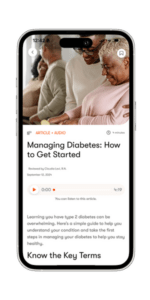
At Dario, we strive to provide relevant health information and self-care resources to our users. Our content is designed to help people better understand available health services. Our recommendation system uses algorithms to suggest potentially relevant content based on user-provided information and interactions with our platform.
For example, a pregnant member may be prompted to schedule a doctor’s visit, but we view it as critical to tell them why and educate them on the importance of seeing a provider during a certain stage of their pregnancy. Our recommendation engine also steers people to the right content for them—if a member is struggling with a recent diagnosis of high blood pressure or type 2 diabetes, we can offer expert crafted advice to help them understand their diagnosis and learn the right questions to ask their doctor.
Health Literacy Tenet #5: Culturally Tailored Content Is Key
Our products are used by people all over the world, and ever since Twill began localizing content in 2017 to meet the needs of our growing global client base, we’ve been intentional about collaborating with psychologists, clinicians, translators, and content creators who are native speakers of the 9 non-English languages we offer on Twill Therapeutics.
Some well-being interventions that seem like no-brainers in the US need modifications to ensure they are culturally relevant for users in other countries. Within the US, we’ve also created content to support various communities including AAPI , Black, and Hispanic/Latinx over the years, always collaborating with experts and creators from those communities who have a firsthand perspective of the unique challenges they face.
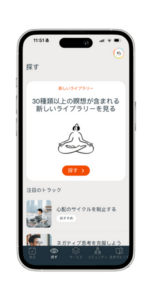
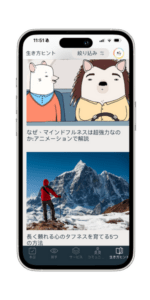

Health Literacy Tenet #6: Don’t Forget to Measure
So, how do we know if our content is meeting the mark? When rolling out new programs and features, we conduct surveys with segmented groups of users who fit the profile of our target audience to understand if our content is comprehensible and engaging. We’ve also invited users to test our products before launch—for example, when we first embarked on a teen program, we invited real teens to review and provide feedback on the activities before release.
And when it comes to global languages, we hire native speakers to review the localized content for readability and cultural appropriateness. In all these cases, we consider and incorporate feedback, and we continue to listen to our users long after the content goes live.
As the health tech industry continues to evolve, we’ll have increasingly sophisticated tools at our fingertips, from the latest GPT to new sensor and data integration capabilities. But it’s on us as content creators, marketers, and product developers to ensure that the output can be easily understood if we truly want to make an impact on the health and well being of a wide and diverse audience. If your aim is health equity, you must keep health literacy and plain language as a top priority.
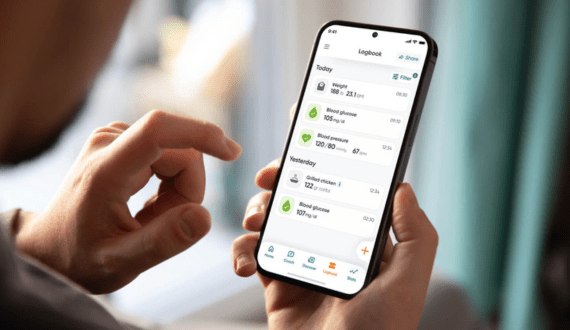
Learn more about the next generation of digital health.
The entire Dario member experience is powered by an intelligent recommendation engine that continuously analyzes clinical and behavioral data to drive sustainable engagement and behavior change over time.
Ready to learn more? Schedule a demo with us.
Request a Demo